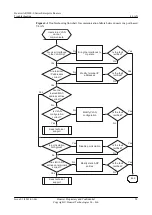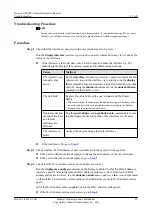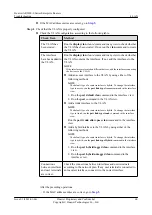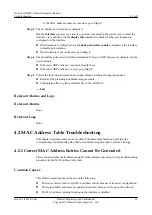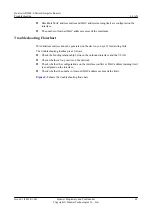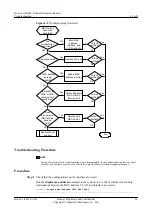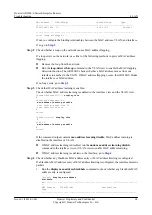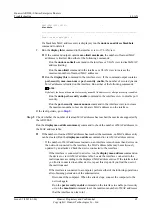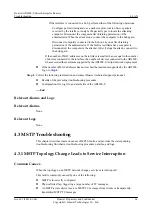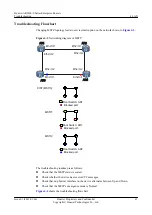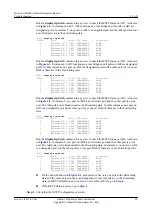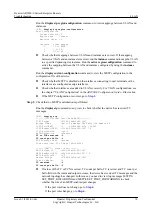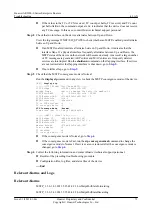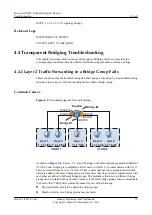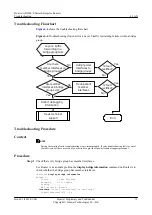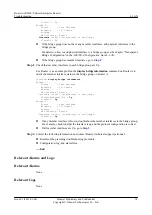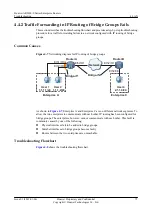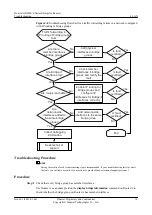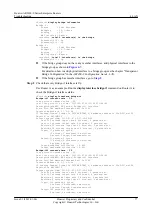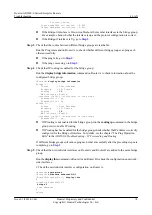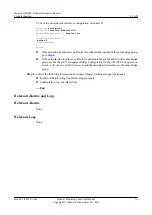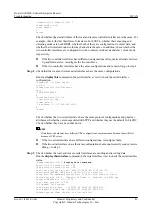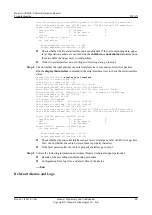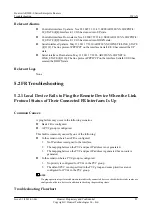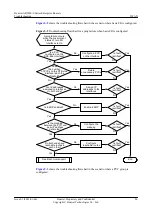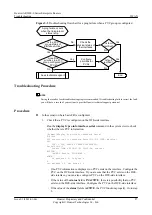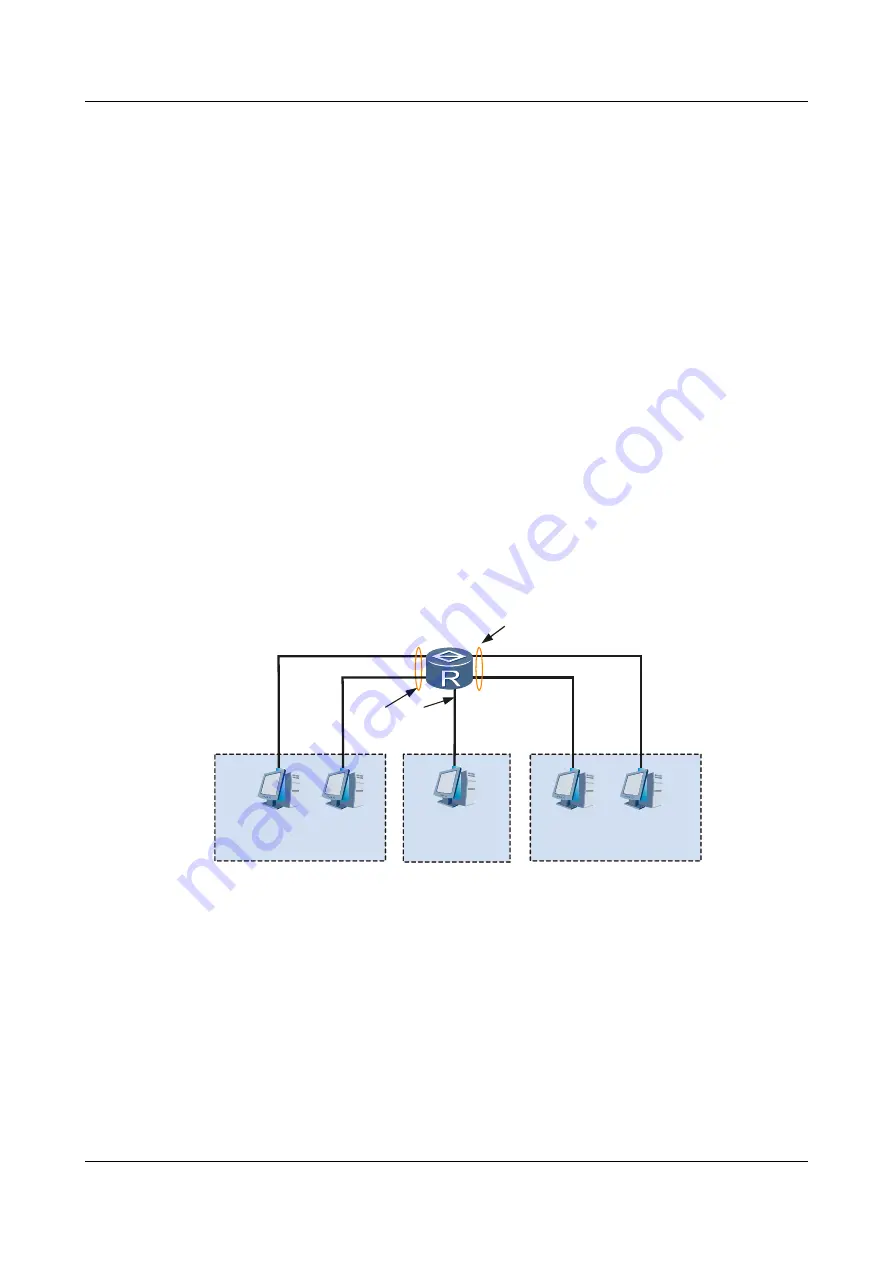
MSTP_1.3.6.1.2.1.17.0.2 topologyChange
Relevant Logs
MSTP/6/RECEIVE_MSTITC
VOSCPU/4/CPU_USAGE_HIGH
4.4 Transparent Bridging Troubleshooting
This chapter describes common causes of transparent bridging faults, and provides the
corresponding troubleshooting flowcharts, troubleshooting procedures, alarms, and logs.
4.4.1 Layer 2 Traffic Forwarding in a Bridge Group Fails
This section describes the troubleshooting flowchart and provides a step-by-step troubleshooting
procedure for a Layer 2 traffic forwarding failure within a bridge group.
Common Causes
Figure 4-5
Networking diagram for local bridging
RouterA
Eth2/0/3
Eth2/0/4
VLAN11
Eth2/0/0
Eth2/0/1
Bridge-if1
Bridge-if2
VLAN12
GE0/0/0
User 4
1.1.1.4/24
User 5
1.1.1.5/24
User 1
1.1.1.1/24
User 2
1.1.1.2/24
User 3
1.1.1.3/24
As shown in
, Users 1, 2, 3, 4, and 5 belong to the same network segment but different
VLANs. Local bridging is configured to allow users in VLAN 11 to communicate with User 3
but to be isolated from users in VLAN 12. That is, users that need to communicate with each
other are added to the same bridge group, whereas users that do not need to communicate with
each other are added to different bridge groups. The problem is that users in different bridge
groups can be isolated from each other, but those in the same bridge group cannot communicate
with each other. This fault is commonly caused by one of the following:
l
Physical interfaces fail to be added to bridge groups.
l
Member interfaces in bridge groups become faulty.
Huawei AR2200-S Series Enterprise Routers
Troubleshooting
4 LAN
Issue 01 (2012-01-06)
Huawei Proprietary and Confidential
Copyright © Huawei Technologies Co., Ltd.
72

